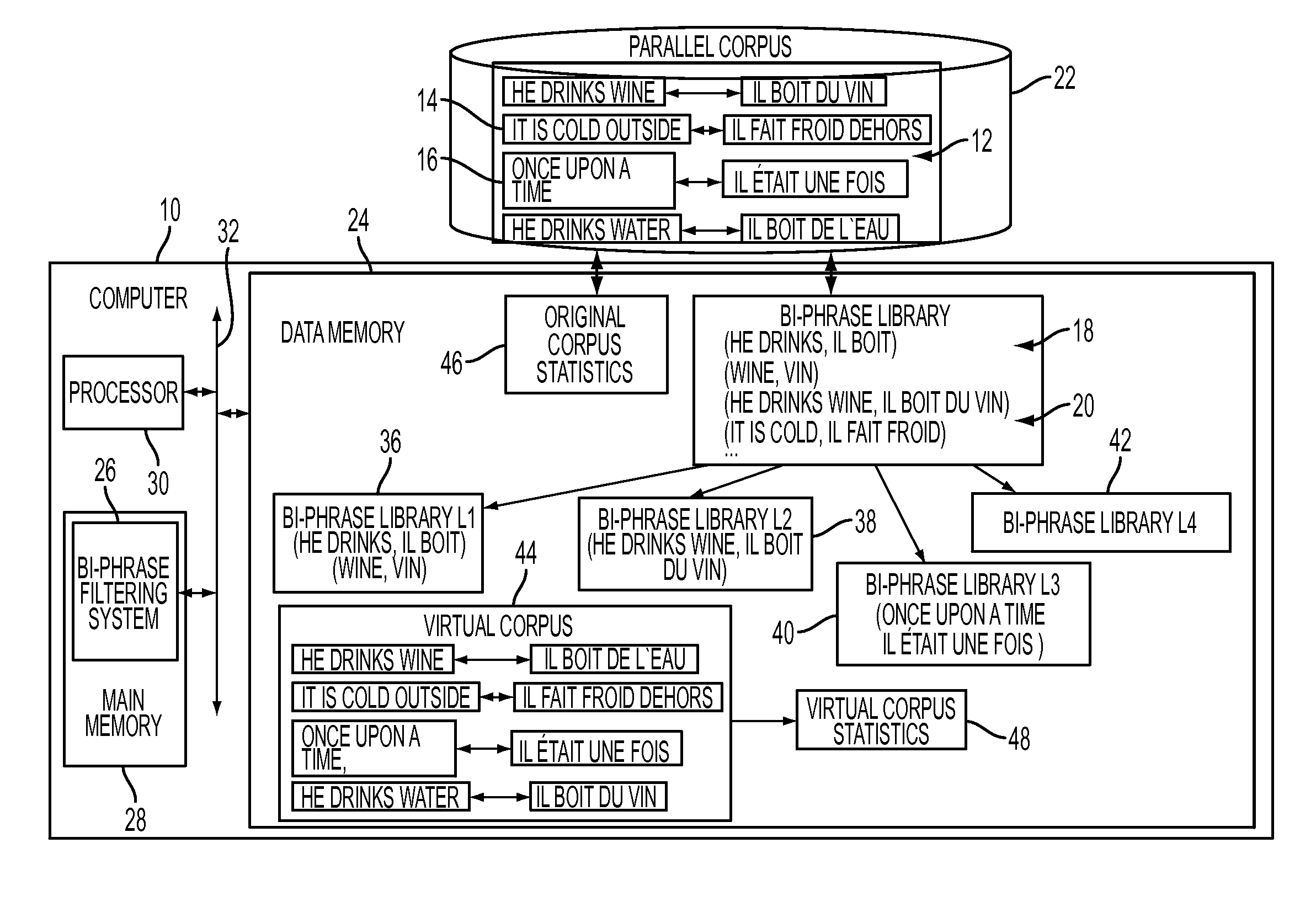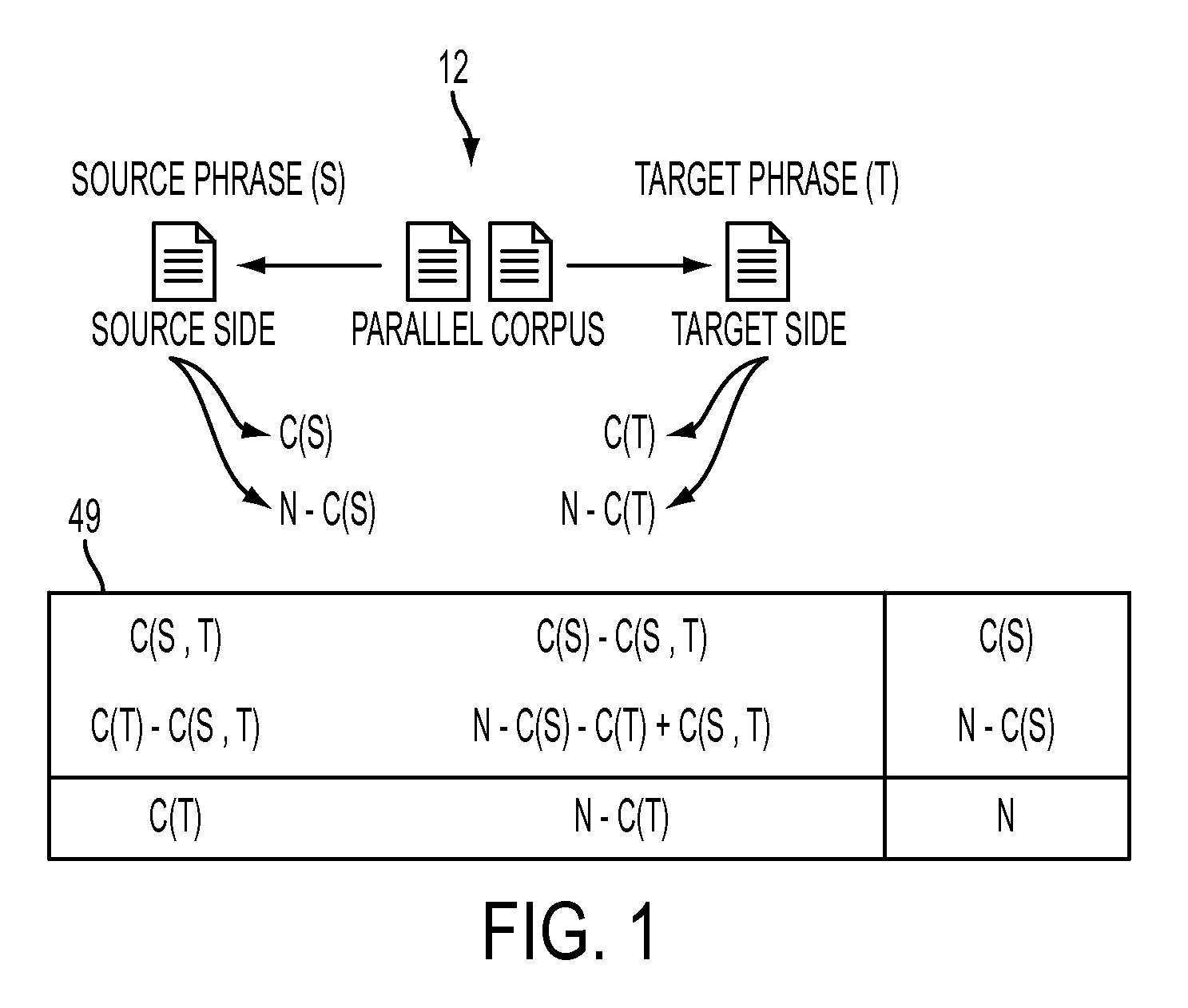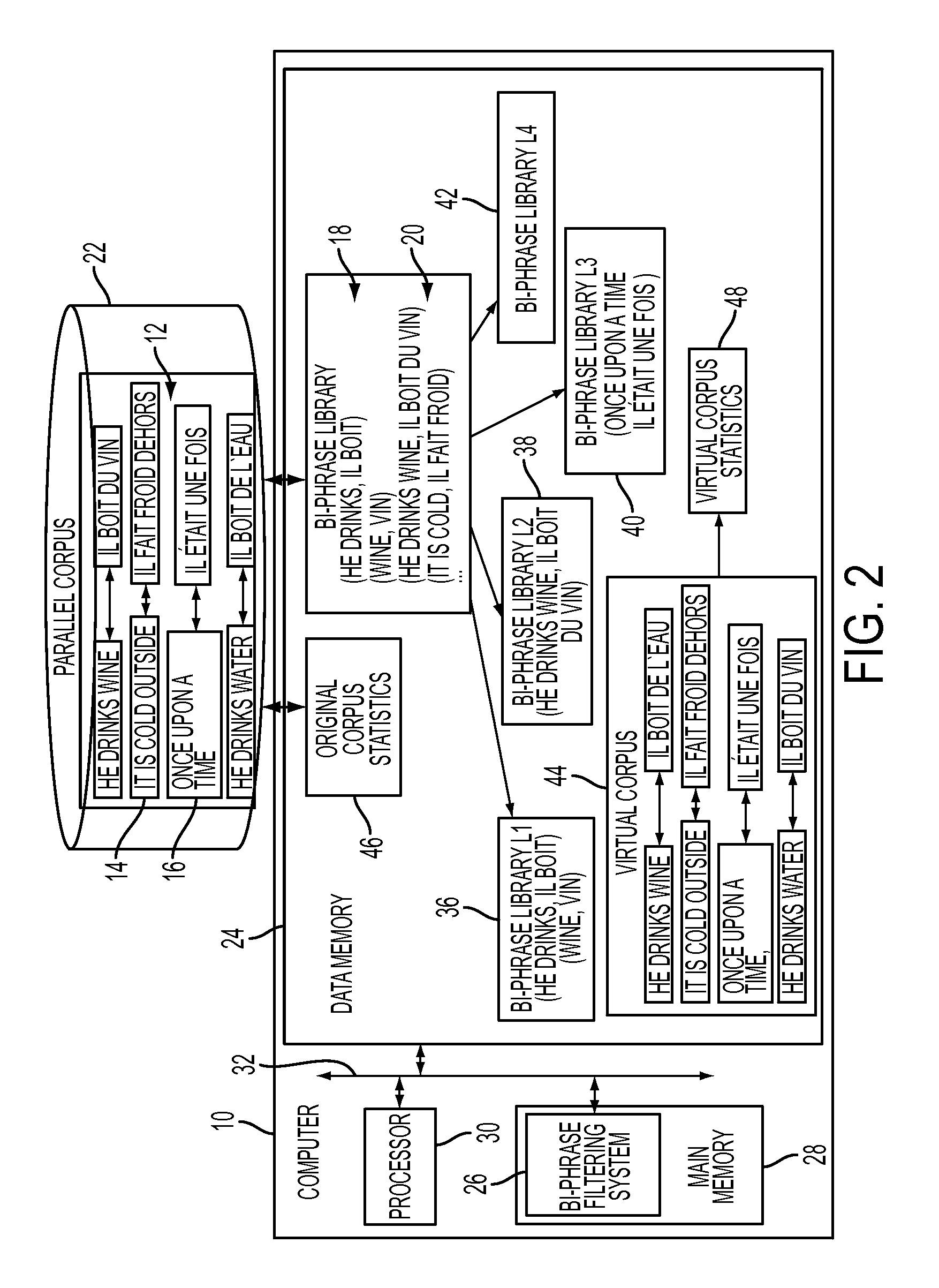Bi-phrase filtering for statistical machine translation
a statistical machine translation and filtering technology, applied in the field of machine translation, can solve the problems of more computational cost, difficult to interpret statistical significance tests, and monotonic noise reduction
- Summary
- Abstract
- Description
- Claims
- Application Information
AI Technical Summary
Benefits of technology
Problems solved by technology
Method used
Image
Examples
example 1
Pruning Based on Association Score (Comparative Example)
[0098]As a baseline experiment, for comparative purposes, raw association scores were used for pruning of bi-phrases from a bi-phrase library extracted from the sentence pairs. In this approach, the method of Johnson 2007 was adapted to use with non-contiguous bi-phrases. The global bi-phrase library U generated from these sentence pairs was partitioned into a number of sub-libraries (another change from Johnson 2007). For the sub-libraries, U1 was made of bi-phrases containing only one cept, with an arbitrary number of gaps, U2-g0 included bi-phrases containing 2 cepts, but with no gaps, U2-g4 included bi-phrases containing 2 cepts with at most 4 gaps, U3-g4 included bi-phrases with 3 cepts, again with at most 4 gaps, and U4-g4 included bi-phrases with 4 cepts, again with at most 4 gaps. As previously noted, a “cept” is an elementary bi-phrase from which more complex bi-phrases can be built. Also, in these examples, each gap r...
example 2
Pruning Based on Noise with Several Complexity Classes (Exemplary Method)
[0102]In this example, noise was used as the pruning criterion, along with several complexity classes for computing it from raw association scores, as described in the exemplary method. As the global bi-phrase library, the library U4-g0 was used, corresponding to bi-phrases obtained by combinations of up to 4 cepts, and containing no gap. The library U4-g0 was partitioned into 4 sub-libraries L1, L2, L3, L4, corresponding to bi-phrases containing 1, 2, 3, and 4 cepts, respectively (and no gaps). Four noise curves relating the raw association score to the noise level were then computed, one curve for each of L1, L2, L3, L4, as explained above for step S116.
[0103]Table 2 and FIG. 8 are numerical and graphical representations of the plots corresponding to L1, L2, L3, L4.
[0104]Table 2 shows noise level as a function of the association score for the four complexity classes.
[0105]
TABLE 2NoiseAssociation ScoreL1L2L3L4...
PUM
 Login to View More
Login to View More Abstract
Description
Claims
Application Information
 Login to View More
Login to View More - R&D
- Intellectual Property
- Life Sciences
- Materials
- Tech Scout
- Unparalleled Data Quality
- Higher Quality Content
- 60% Fewer Hallucinations
Browse by: Latest US Patents, China's latest patents, Technical Efficacy Thesaurus, Application Domain, Technology Topic, Popular Technical Reports.
© 2025 PatSnap. All rights reserved.Legal|Privacy policy|Modern Slavery Act Transparency Statement|Sitemap|About US| Contact US: help@patsnap.com



